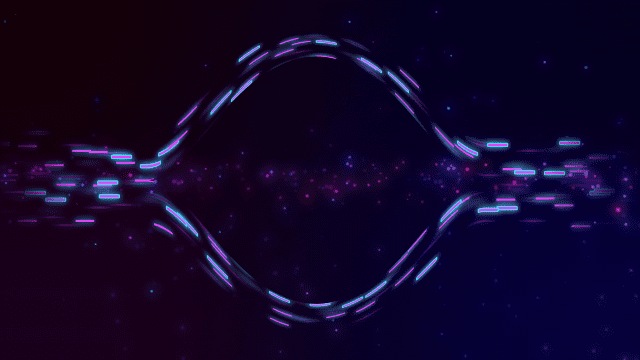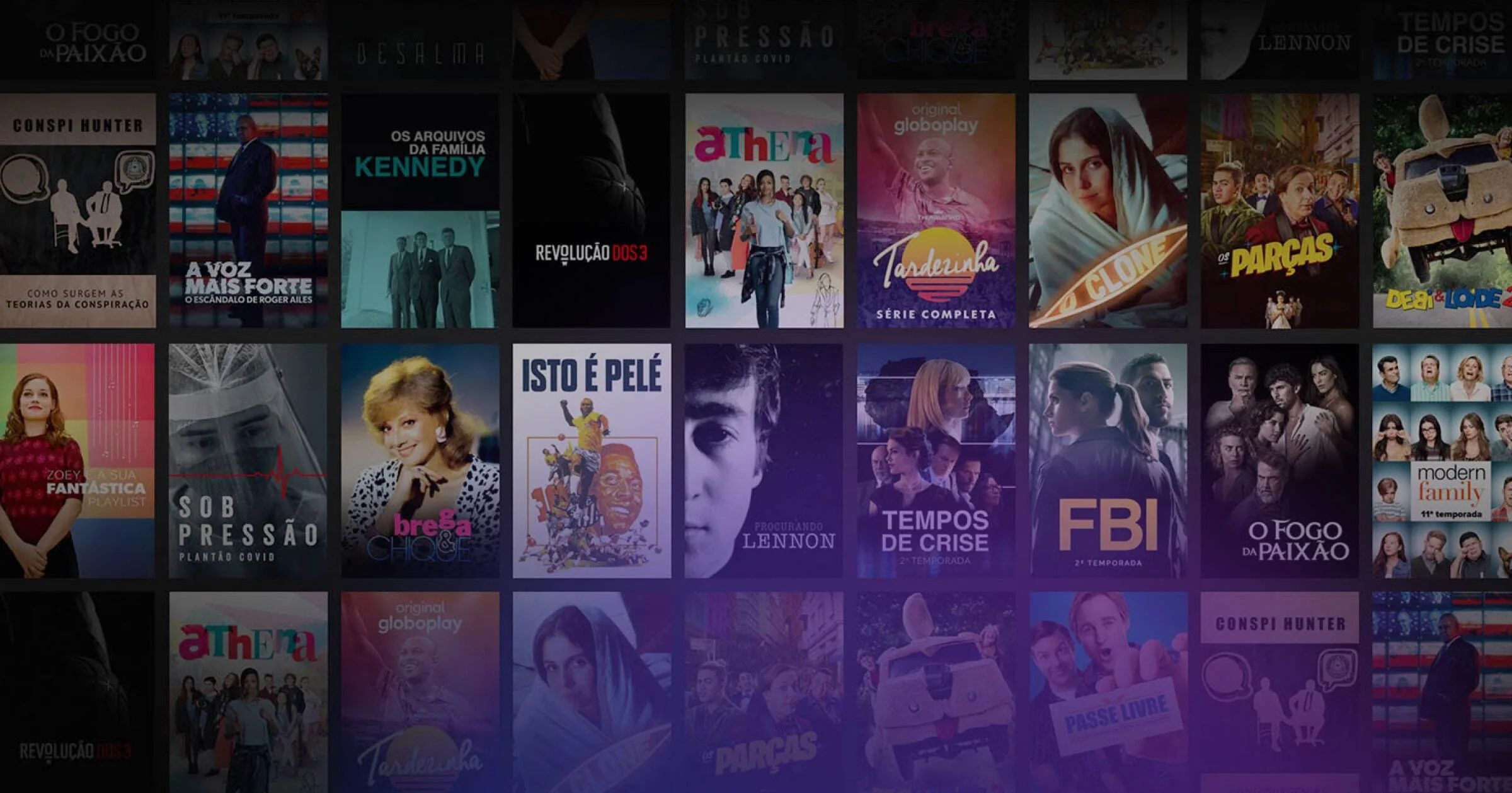Introduction
In the early days of digital video, encoding a full-length movie could take several hours or even days to complete, depending on the settings and techniques that were used. Over time, as processor speeds increased and specialized hardware was introduced, encoding turnaround times decreased, but it was usually an incremental, linear response to the advancements in technology. Once cloud computing resources became readily available and opened new possibilities, cloud-native encoding services like Bitmovin disrupted the status quo with massive gains for encoding speed and turnaround times. This potential was unlocked by developing an innovative new technique known as split-and-stitch encoding.
What is split-and-stitch encoding?
As the name suggests, split-and-stitch encoding is a method of encoding that involves splitting a file into smaller chunks, encoding those chunks separately, and then stitching them back together. These smaller chunks being encoded in parallel with separate cloud computing resources led to huge leaps in shortening turnaround times. Prior to that, digital videos were processed linearly, which was an unnecessary limitation carried over from film and tape processing workflows, where the physical medium was actually a limiting factor.
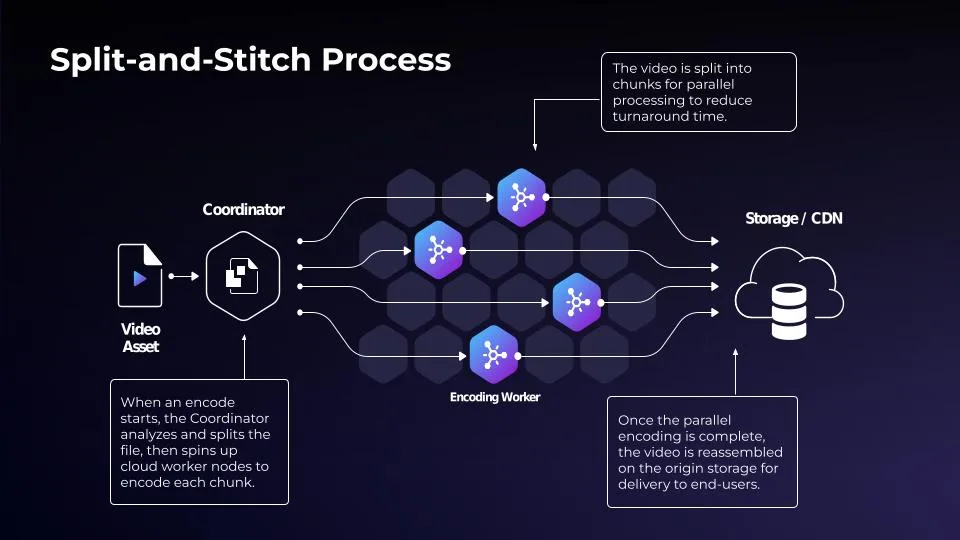
How fast is split-and-stitch encoding?
Back in 2015 when Bitmovin first implemented our encoder on the Google Compute Engine (now Google Cloud Platform) we were able to achieve encoding speeds of 66x real-time running in their cloud, as mentioned here. With some further optimization, we became the first to reach 100x real-time encoding speeds.
The actual turn-around times for your encoding jobs will depend on a lot of factors including source format, codec(s), resolution, duration and advanced features like Dolby Vision, but even with very complex 4K HDR workflows, your encodes will run faster than real-time using split and stitch. Below is a real-world example of an H.264/AAC encoding that ran faster than 92x real-time.
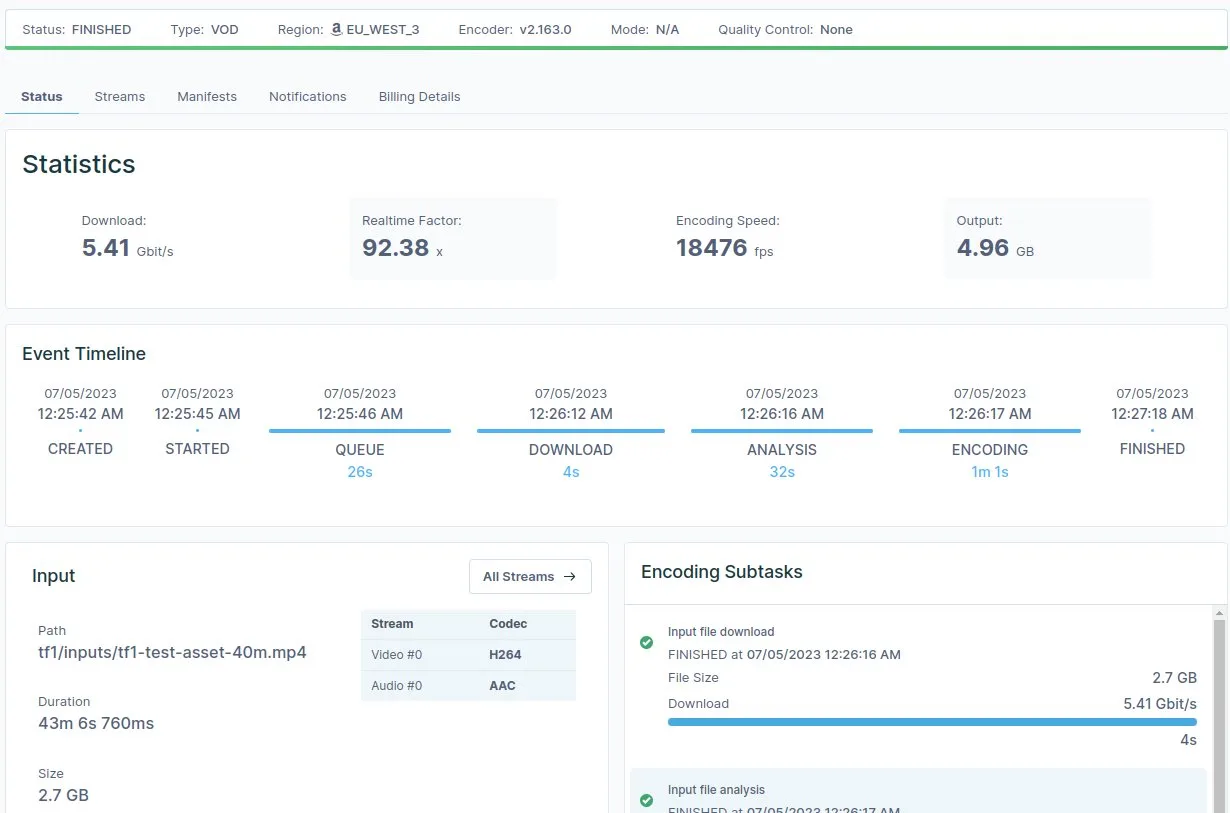
Running split-and-stitch encoding in the cloud means your individual encoding jobs run faster than real-time, but it also means that you can scale to run many jobs in parallel which allows large backlogs to be cleared in hours instead of weeks. You also have the capacity to handle spikes of content with no impact on queue time.
What are the advantages of Bitmovin’s split-and-stitch encoding?
Bitmovin has over a decade of experience developing and refining our split-and-stitch implementation. We built our system to take advantage of spot and preemptible instances to keep costs down, while surpassing the quality of single instance encodes with innovations like 3-pass encoding and Smart Chunking. Our intelligent workload orchestration allows you to manage priority and resource scheduling with capacity for thousands of jobs per hour.
Bitmovin also supports using multiple codecs and packaging formats together with split-and-stitch, including H.264 (AVC), H265 (HEVC), VP9 and AV1 with both HLS and DASH, where other platforms may be limited to H.264 and HLS. We’ve also implemented fast decode enhancements for large J2K and ProRes mezzanine source files that reduce the overall turnaround time even further.
What is Smart Chunking?
In 2023, Bitmovin made some key changes and updates to our VOD Encoder with a new feature called Smart Chunking. This further increased the potential visual quality and turnaround times that were possible with split and stitch by decoupling the split-and-stitch chunk duration from the user-defined segment duration. This allows for variable chunk size depending on the type of codec and the complexity of encoding, enabling many immediate improvements and future optimizations. Using Smart Chunking means we can segment chunks at the optimal points with better bitrate distribution, providing more consistent quality without any noticeable dips.
In the graph below, you can see a comparison of an encoding job run with and without Smart Chunking. While the overall quality is similar, in the blue version (without Smart Chunking) there are several lower quality outlier frames. By using Smart Chunking (orange version) the lowest 1% of frames in terms of quality were improved by an average of 6 VMAF points, which is a noticeable difference. The lowest 0.1% improved by 22 VMAF points and the single worst frame gained a massive 60 VMAF points.
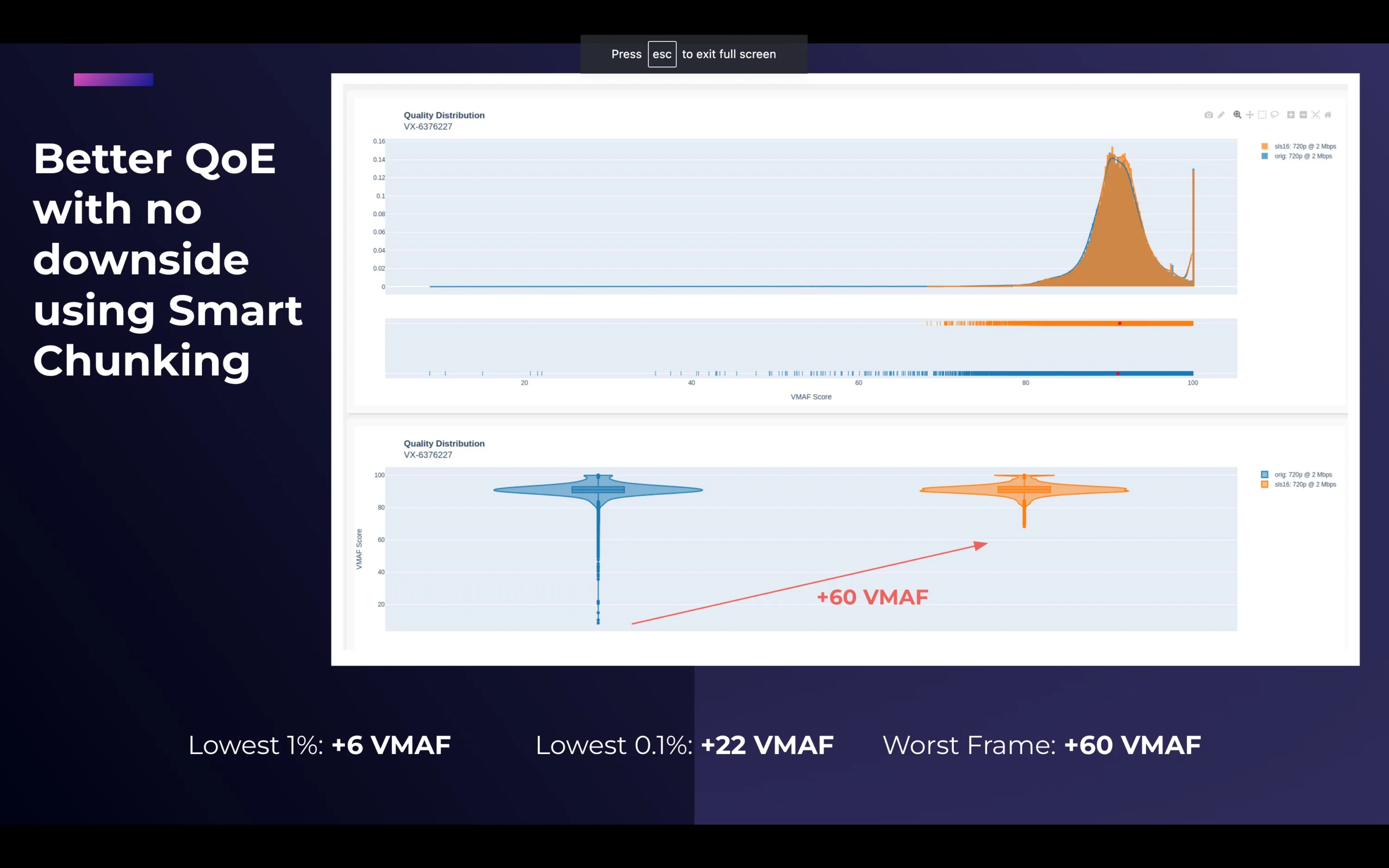
Is split-and-stitch always the best approach?
The steps of analyzing, splitting and reassembling chunks of video do add some overhead processing time to the encoding process. For longer episodic content or movies, the added time is negligible compared to the time saved by using split-and-stitch. But, for shorter videos like ads and news clips that are time-sensitive, the pre-processing can make using split-and-stitch less advantageous.
For these cases, Bitmovin has 2 solutions. First, we’ve added support for hardware encoding with Nvidia T4 GPUs. They can deliver the same quality of video encoding, up to four times faster than CPUs, with H.264 (AVC) and H.265 (HEVC) codec support. We also have a new “accelerated mode” that uses pre-warmed cloud compute resources, so you no longer have to wait for new instances to be started. This has made a huge impact on overall encoding job turnaround time, lowering queuing times from minutes to <10 seconds.
Ready to get started with split-and-stitch encoding?
Bitmovin’s split-and-stitch encoding with Smart Chunking is enabled by default and doesn’t require any special configuration. You can get started quickly with our dashboard encoding wizard without any coding required. Get going today with our free trial and see the results for yourself by clicking here!

